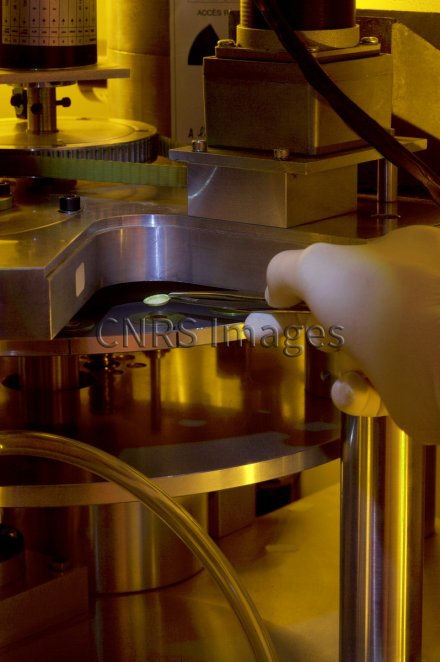Production year
2008

© Christophe LEBEDINSKY/CNRS Images
20080001_0161
Chargement des cristaux de quartz dans la machine de thermoluminescence utilisée pour la datation des briques de la chapelle Notre-Dame-sous-Terre au Mont-Saint-Michel. La thermoluminescence est l'émission de lumière provoquée par le chauffage d'un minéral préalablement irradié par des rayonnements ionisants d'origine naturelle ou artificielle. Une source d'irradiation incorporée à l'appareil permet de simuler artificiellement, en quelques minutes, des millénaires d'irradiation naturelle. Il est ensuite possible de déduire la quantité d'irradiation absorbée par les cristaux de quartz depuis leur dernier chauffage, c'est à dire le moment de la fabrication des briques.
The use of media visible on the CNRS Images Platform can be granted on request. Any reproduction or representation is forbidden without prior authorization from CNRS Images (except for resources under Creative Commons license).
No modification of an image may be made without the prior consent of CNRS Images.
No use of an image for advertising purposes or distribution to a third party may be made without the prior agreement of CNRS Images.
For more information, please consult our general conditions
2008
Our work is guided by the way scientists question the world around them and we translate their research into images to help people to understand the world better and to awaken their curiosity and wonderment.